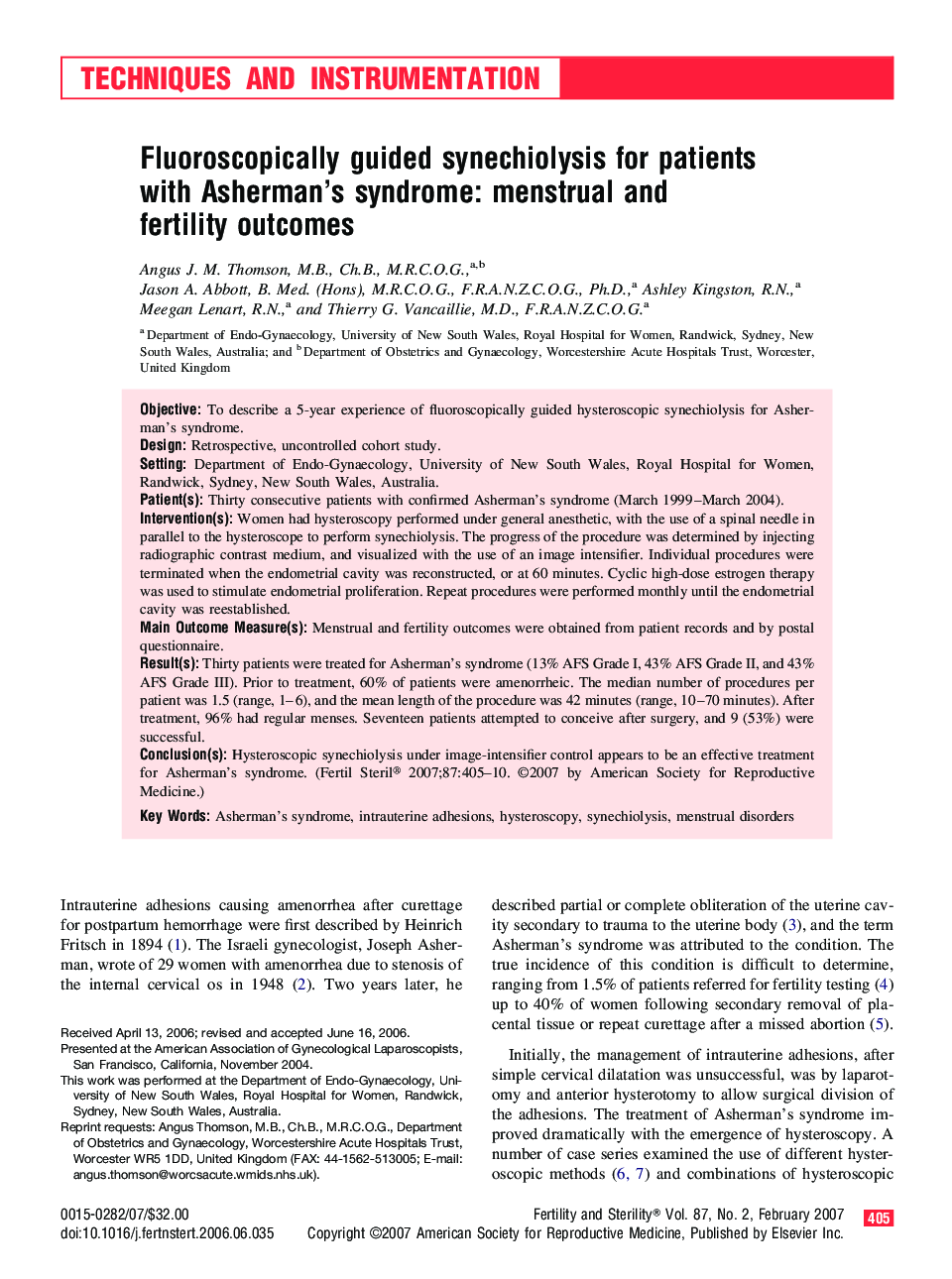| Article ID | Journal | Published Year | Pages | File Type |
|---|---|---|---|---|
| 3936099 | Fertility and Sterility | 2007 | 6 Pages |
ObjectiveTo describe a 5-year experience of fluoroscopically guided hysteroscopic synechiolysis for Asherman’s syndrome.DesignRetrospective, uncontrolled cohort study.SettingDepartment of Endo-Gynaecology, University of New South Wales, Royal Hospital for Women, Randwick, Sydney, New South Wales, Australia.Patient(s)Thirty consecutive patients with confirmed Asherman’s syndrome (March 1999–March 2004).Intervention(s)Women had hysteroscopy performed under general anesthetic, with the use of a spinal needle in parallel to the hysteroscope to perform synechiolysis. The progress of the procedure was determined by injecting radiographic contrast medium, and visualized with the use of an image intensifier. Individual procedures were terminated when the endometrial cavity was reconstructed, or at 60 minutes. Cyclic high-dose estrogen therapy was used to stimulate endometrial proliferation. Repeat procedures were performed monthly until the endometrial cavity was reestablished.Main Outcome Measure(s)Menstrual and fertility outcomes were obtained from patient records and by postal questionnaire.Result(s)Thirty patients were treated for Asherman’s syndrome (13% AFS Grade I, 43% AFS Grade II, and 43% AFS Grade III). Prior to treatment, 60% of patients were amenorrheic. The median number of procedures per patient was 1.5 (range, 1–6), and the mean length of the procedure was 42 minutes (range, 10–70 minutes). After treatment, 96% had regular menses. Seventeen patients attempted to conceive after surgery, and 9 (53%) were successful.Conclusion(s)Hysteroscopic synechiolysis under image-intensifier control appears to be an effective treatment for Asherman’s syndrome.
